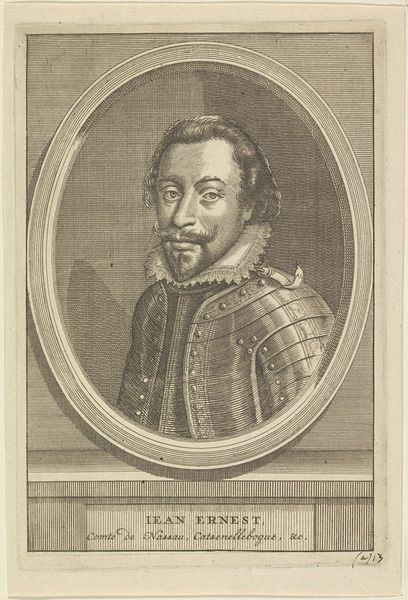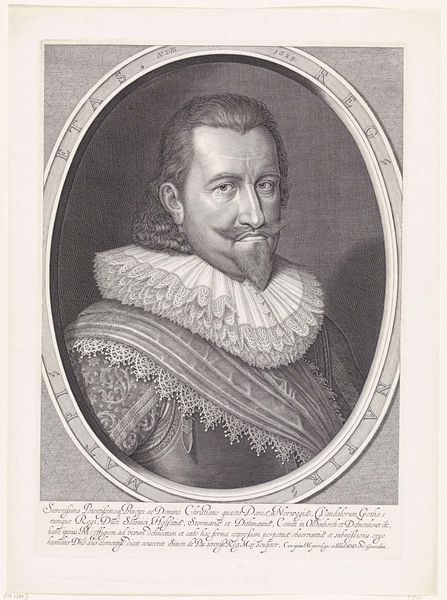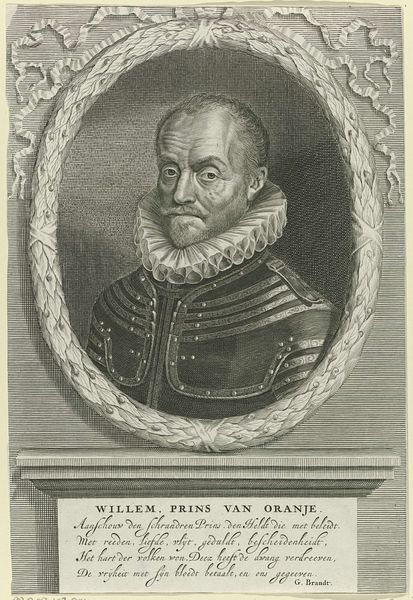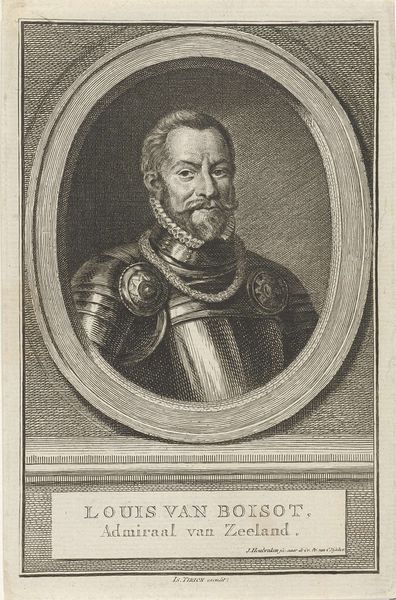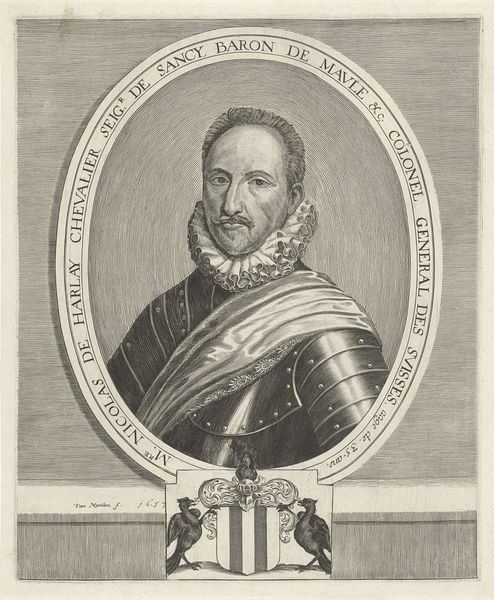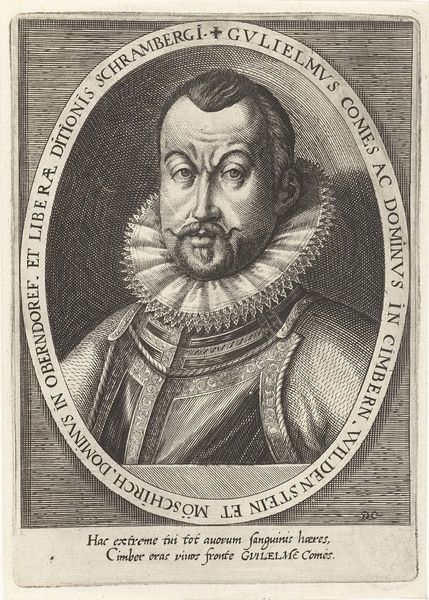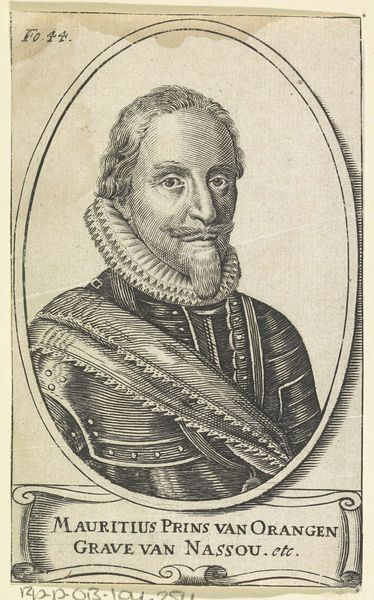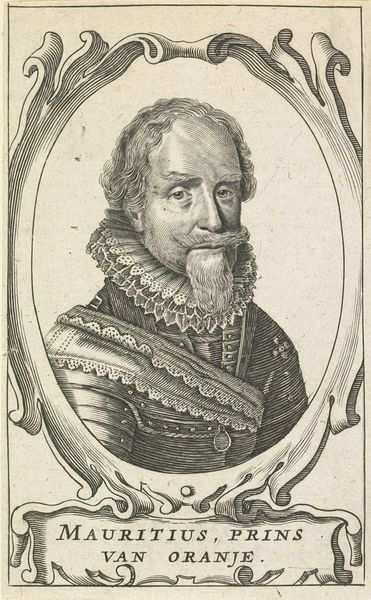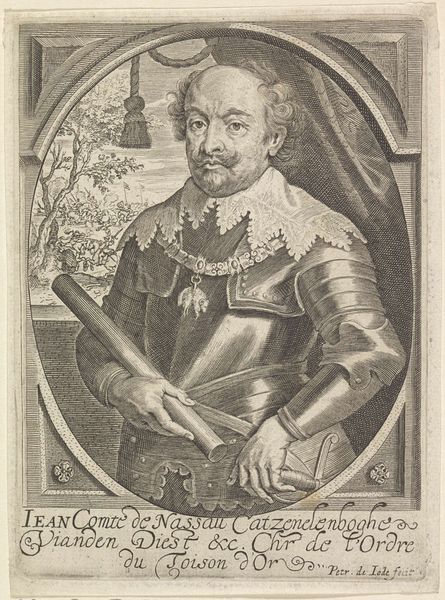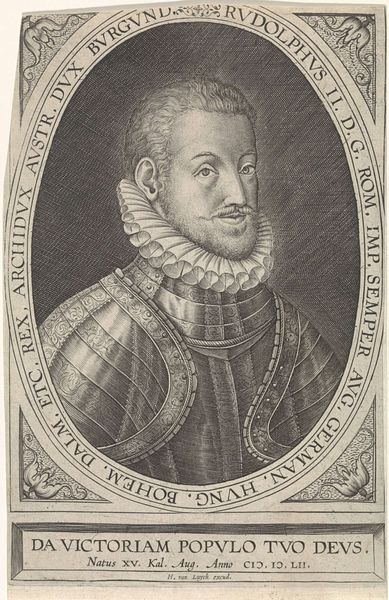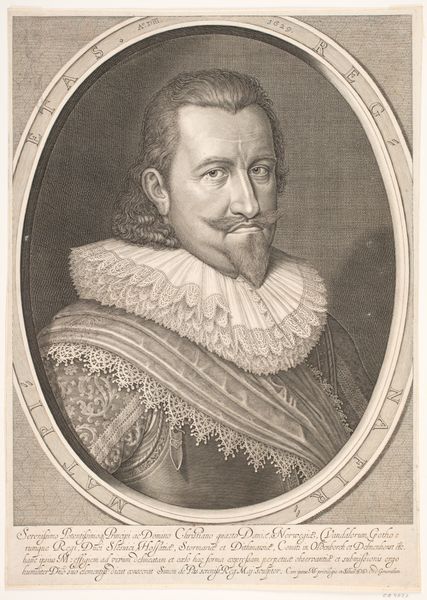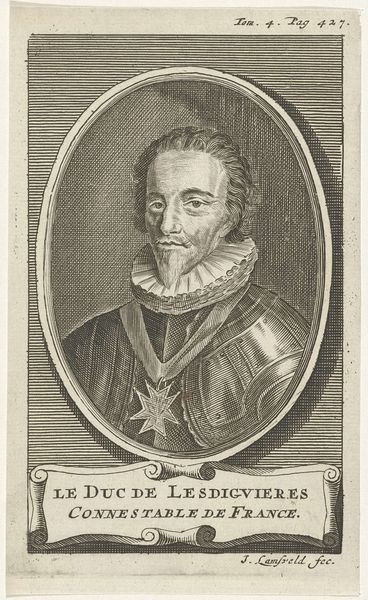
print, engraving
#
portrait
#
baroque
# print
#
figuration
#
line
#
history-painting
#
engraving
Dimensions: height 188 mm, width 128 mm
Copyright: Rijks Museum: Open Domain
Editor: So this is a 17th-century engraving, a portrait of Johan VIII, Count of Nassau-Siegen. It has this formal feel, like we’re looking at a historical figure frozen in time, but his gaze seems pretty intense, direct. What do you make of this piece? Curator: Immediately, I consider the role portraiture played within the aristocracy during this era, a visualization of power. Consider his armor. It is both protective and symbolic of military might, status, and the social hierarchies. How does this intersect with contemporary conversations about power structures? Editor: I see your point. It’s interesting how the detail in his clothing and the oval frame make him stand out. It’s not just a random depiction, it's designed to make an impact. What does the Baroque style contribute? Curator: The Baroque elevates drama and detail. Think of it in relation to court politics, religion, the cultural climate. The visual rhetoric here amplifies Johan VIII's position. Consider the engravings' lines - they create the face and costume. What kind of conversation emerges when we start thinking about class, power and art's reflection of them? Editor: The level of control in the lines of this piece certainly says something about that. Curator: Exactly. It prompts a dialogue on how images perpetuate social orders and even resistance through portraiture in its history. And what does it say when this image is now viewed in our time? Is his representation different when perceived outside the world of nobility? Editor: Thinking about that makes me realize how much context affects the art. It makes you wonder who has their story told, and by whom. Thanks for helping me connect this historical piece to broader social narratives!
Comments
No comments
Be the first to comment and join the conversation on the ultimate creative platform.
